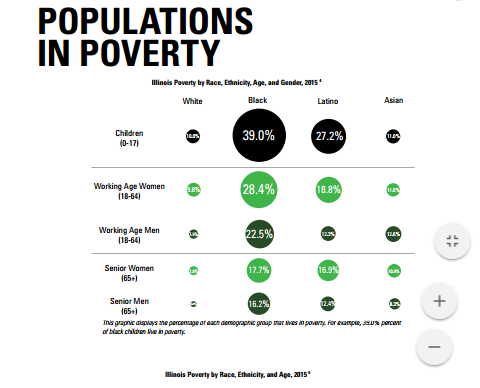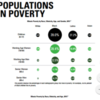We make the case that the conditions that foster violence and the conditions that perpetuate poverty are interconnected and reinforce each other; we further show the traumatic effects of violence -- and how trauma drives both poverty and violence. We then examine how violence has been used to enforce systems of racial oppression and how communities of color are disparately impacted by violence today.
The conditions that perpetuate poverty and the conditions that foster violence often intersect and reinforce each other. People living in poverty are more likely than people with higher incomes to become victims of violence. People with the lowest incomes (with household income less than $10,000) nationwide experience a rate of violent victimization that is 206 percent higher than people with the highest incomes (with a household income of $75,000 or greater). The disparity is even greater for serious violent crime (which includes rape or sexual assault, robbery, and aggravated assault): the rate of serious violent crime victimization for people with the lowest incomes is 293 percent higher than the serious crime victimization rate for people with the highest incomes.
People living in poverty are much more likely to experience serious violent crime of any type nationwide. Between 2008 and 2012, the rate of rape/sexual assault victimization was 267 percent higher for people living in poverty than for people with high incomes, while the rate of robbery victimization is 244 percent higher and the aggravated assault victimization rate is 226 percent higher. The gun crime victimization rate for people living in poverty is 338 percent higher than the rate for people with high incomes, while the rate of non-gun-related violent crime victimization is 221 percent higher for people living in poverty than for people with high incomes.
To read more of Issue Lab's Report, please click here.
The 48 page report is also attached.


Comments (0)